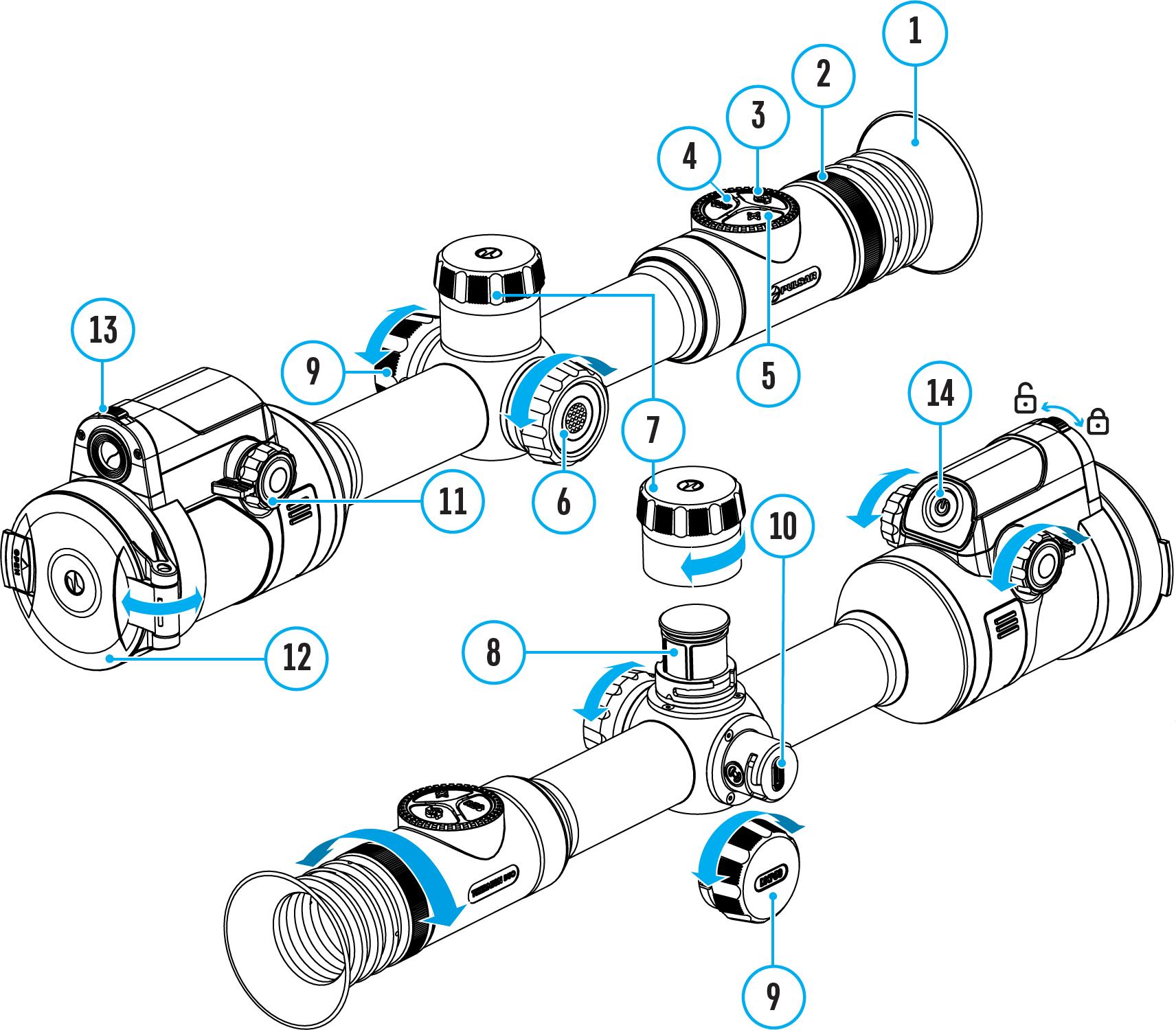
1 minute read
Powering on and Image Setting
Show device diagram
1. Open the thermal channel lens cover (12).
2. Open the digital channel lens cover by moving the switch (13) to the left.
3. Turn the unit on with a short press of theON/OFF (14) button.
4. Adjust the sharpness of the symbols on the display by rotating the dioptre adjustment ring of the eyepiece (2)
5. Turn the focus knob of the thermal imaging channel lens (11) to focus on the observation object in the thermal imaging mode.
6. Briefly press the MODE button (3) to select the desired image mode: thermal or digital.
7. Long press the MODE button (3) to activate the PiP multispectral mode. Briefly press the MODE button (3) to select the image mode of the PiP window: thermal or digital.
8. In thermal imaging and multispectral PiP modes:
Enter the main menu with a long press of the controller button (6) and select the desired Calibration Mode: manual (M), semi-automatic (SA)or automatic (A).
Calibrate the thermal image with a short press of the ON/OFF (14) button (when calibration mode SA or M has been selected). Close the thermal channel lens cover before manual calibration. Select the required thermal image amplification level ( Normal , High , Ultra ) in the quick menu (activate by briefly pressing the controller button (6); for details, see the Quick Menu section).
Activate the smoothing filter in the main menu to improve the thermal image as the amplification level increases. Select one of the colour palettes for the thermal image in the main menu.
9. Adjust the brightness and contrast of the display in the quick menu.
10. Repeatedly press the ZOOM (5) button to change the magnification ratio of the riflescope. While the magnifying glass icon is visible on the screen, rotate the controller ring(6)for smooth digital zooming from the current magnification.
11. Power the device off with a long press of the ON/OFF (14) button.
Observation conditions: time of day, weather, different observation objects affect the image quality. Custom settings for brightness, display contrast as well as the function of adjusting the microbolometer sensitivity level will help to achieve the desired quality in a particular situation.
Warning! Never point the lens at intensive energy sources such as laser radiation emitting devices or the sun. It can damage electronic components in the device. The warranty does not cover damage arising from failure to comply with operating instructions.



